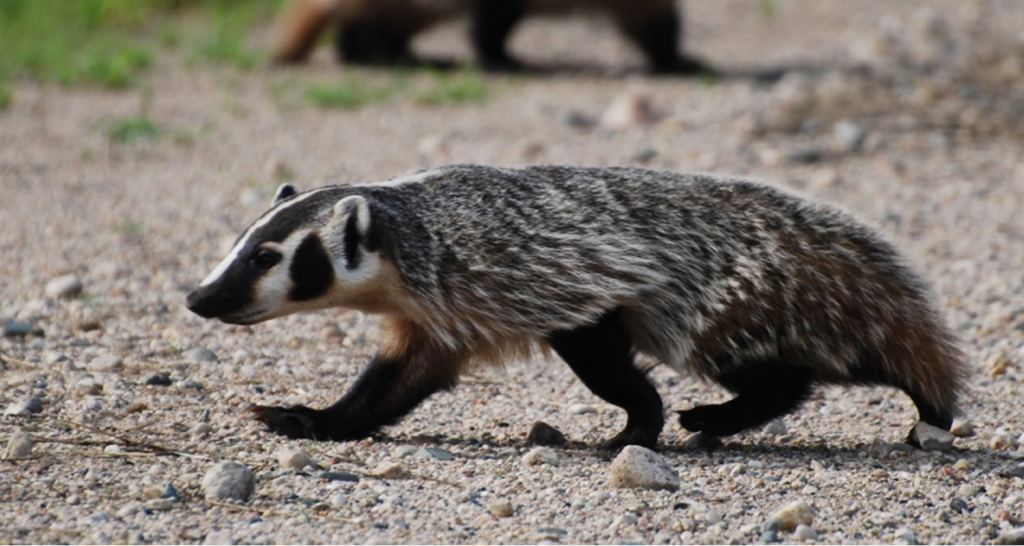The Sounds of Nature in Your Backyard: Furry Visitors in the Night
Throughout the year, your yard and neighbourhood are home to a plethora of nature sounds. They can be the pleasant and relaxing kind—a burbling stream, a gentle wind rustling through leafy trees, the avid chirps and splashing of bathing birds—of which spa music playlists are made. Or they can be perturbing and strange (always at night!)—haunting howls, screeches, and screams that bring a banshee to mind and seem better suited for a campfire ghost story.
What curious, perhaps off-putting, noises are you hearing this summer? Your yard, whether in the country, the city, or somewhere in between, may be a prime destination for one of these furry creatures who are known for their sometimes disconcerting, but still fascinating, vocalizations.
American Badger

Nocturnal by nature, this solitary member of the weasel family is rarely seen, though maybe you will hear one. Badgers have over 15 discrete sounds, ranging from the chirps, coos, and clucks of cubs to the soothing purr of a mother to her young and the growling and yelping sounds of threatened adults. Though they feed primarily on rodents, badgers are opportunistic eaters and will consume whatever is near and available to them—small birds, eggs, rabbits, mice, and squirrels. The American badger is found across Canada, from southern British Columbia to southern Ontario.
American Marten (Pine Marten)
In this recording, the pine marten exhibits scolding behavior by producing squeaks and a low huffing noise. A member of the weasel family, it is about the size of a small cat with the characteristically long, slinky body and a small, fox-like face. This extremely active creature has a high metabolism and spends a lot of its time hunting. In addition to fruit and nuts, the American marten will prey on birds and larger animals like snowshoe hares and marmots. This boreal forest dweller is found throughout Canada, and the Newfoundland Marten (Martes americana atrata) is classified as threatened under the federal Species at Risk Act.
Coyote
In this recording, the coyotes sound like a pack of dogs. And no wonder, as coyotes and dogs, along with wolves and jackals, are all members of the Canidae family. Coyotes readily adapt to all kinds of environments—deserts, mountains, forests, countryside, and more recently, urban areas. As such, they have a wide distribution in Canada—British Columbia, Yukon and the Northwest Territories, Alberta, southern Saskatchewan and Manitoba, and the Maritimes. This carnivorous, nocturnal animal feeds mainly on rodents and rabbits, but also presents a threat to livestock and pets. (Another reason to keep your cat indoors.)
Grey Squirrel

These backyard pests or pals, depending on your point of view, are highly intelligent, agile mammals who spend most of their time in trees and are masters of eating in season—maple buds in spring; berries, seeds, and apples in the summer; hickory nuts and acorns in autumn. They are also fast, moving up to 25 kilometres per hour when on the ground. Their alarm call is a series of rapid clicking sounds. This type of squirrel stands out for its bushy tail, parts of which it can sometimes lose in order to escape from a predator. Native to native to southern New Brunswick, Quebec, Ontario, Manitoba, and Saskatchewan, this tree squirrel is active year-round and found throughout Canada.
Red Fox
The solitary, resourceful red fox is found in all of Canada’s provinces and territories. Some of its vocalizations can be uncomfortable to listen to, such as in this disturbing recording. This clever carnivore, however, makes a wide variety of sounds, from howling and barking to softer whining and squealing, depending on its age and situation. For example, its screaming howl occurs most frequently during springtime breeding season (and, interestingly, red foxes are usually monogamous). The red fox typically lives and hunts in forests and near farms. Among their favourite foods are rodents, insects, frogs, fruit, and poultry.
Acknowledgements: Badgerland, British Library Sounds, The Canadian Encyclopedia, Canadian Wildlife Federation, Hinterland Who’s Who, LiveScience, Macaulay Library



